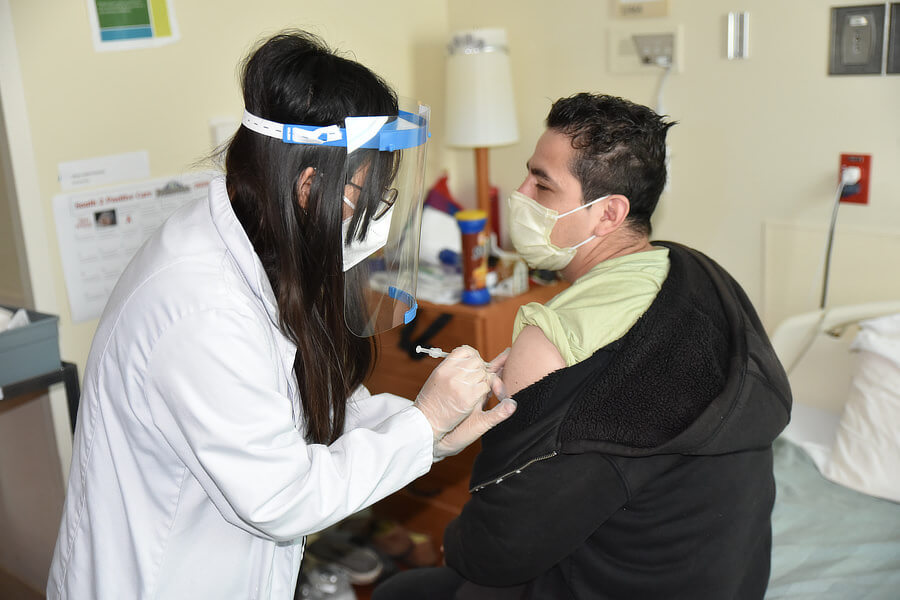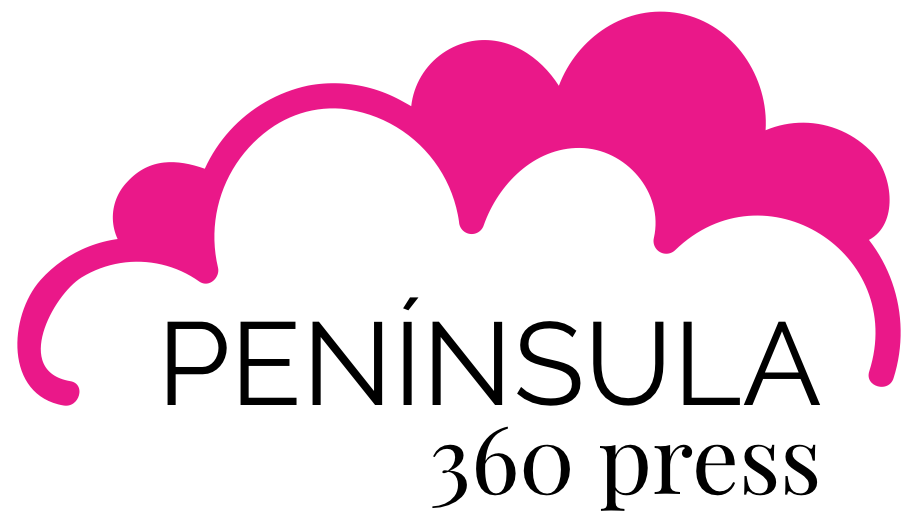
Pamela Cruz. Peninsula 360 Press [P360P].
Over the course of a year, we have seen how the U.S. has faced major challenges due to the pandemic by COVID-19, although the SARS-CoV-2 virus knows no race or social strata, this has not hit all communities equally, as those who have suffered most are the African descent and Latinos, who, in turn, have been those who have received the least number of vaccines against the disease, showing that in health matters there is no equity either.
So far, there is little data from official sources to indicate the exact and current number of COVID-19 positive cases and resulting deaths that indicate the race and ethnicity of those affected. The same is true for the search for information on the vaccines administered.
And according to Dr. Daniel Turner-Lloveras, a founding member of the Latino Coalition Against COVID-19, only 20 U.S. states are sharing data related to the racial origin of those receiving vaccines.
"This is something that needs to be corrected immediately. If we are not able to measure the number of people who are being vaccinated, we will not be able to quantify the disparity and it will be very difficult to find a solution or a way to solve the problem - in vaccination equity," he said.
During the briefing "COVID-19 mortality rates highlight health equity issues," conducted by Ethnic Media Services, The first step in addressing the unequal distribution of these COVID-19 vaccines," he said, "is to make sure that all states are reporting the racial data of those who are recipients.
This, he said, "so that we can make the appropriate intervention and try to find a solution and find a way so that those who need them most - the vaccines - are the ones who are receiving them.
And despite the fact that essential workers, many of whom are black and Latino because they work in the food and service industry, should be vaccinated, they are not considered when decisions are made about vaccine distribution.
"We have to be cognizant of the fact that when we're reopening (establishments), oftentimes, - African descendants and Latinos - it's the underserved, it's the minority populations that are actually working in these jobs that we want to open, and we have to be cognizant of that. These are the ones who are most at risk," he said.
"They need to be at the table when these decisions are made, because if the decision is to reopen and that decision impacts that majority of minorities, they need to have a voice and something to say about it," he added.
To the above, he said, it should be added that "we haven't seen the full impact of vaccine hesitancy yet, because right now there is a shortage and there are people who want them. However, when the supply comes back is when we will really face this hesitancy ... people won't be there and that's something we want to avoid, and that's why the solution is going to involve reaching out to the community."
In that sense, he said there is a need to have open and unbiased conversations with city councils, where people can ask about their concerns of distrust in the drug, in the pharmaceutical industry and in the government.
"They have to be - conversations - open and provide information in a way that is culturally sensitive, in the language that they speak. And if we're able to do something like that, which is a great digital patient engagement project, then we're going to be able to achieve herd immunity," he said.
Turner-Lloveras explained that the COVID-19 pandemic has overwhelmed most health systems.
"I think, if you look closely, you'll see that the disparities are showing up, which were underlying ... underneath a layer where they weren't being exposed to everybody. So, obviously, now, with the pandemic, these gaps have become chasms and are easier to see, and the gaps in access to care are also becoming more noticeable," she said.
"The health system wasn't prepared for this because we didn't fund the parts of the system that needed to be funded to keep these gaps from growing. So this is a wake-up call," he added.
He added that another barrier faced by farming communities, as well as the elderly population, is low or no digital literacy, as well as access to technology that would allow them to access information on how to get the vaccine or answer their questions about immunization.
For Virginia Hedrick, executive director of the California Consortium for Urban Indian Health in California and a member of the Yurok tribe, American Indians and Alaska Natives across the United States are contracting COVID-19 at rates 3.5 times higher than non-Hispanic whites.
"We are being hospitalized at rates, in any given week, four to five times more than our non-Hispanic white counterparts. We're dying from COVID-19 overall at a rate of 1.8 times that of non-Hispanic whites," he said.
"When we hear terms like "we're all in this together" or "everyone is being impacted," there are communities like mine that are impacted very differently. So no, we're not all in this together," he stressed.
He explained that the Indian health care system in California serves about 80,000 American Indians and Alaska Natives, while there are more than 700,000 people belonging to these communities living in the state.
"We are seeing our tribal leaders dying. We are seeing our elders die and in Indian country when you lose an elder you are losing knowledge and language that can never be recovered. It is like a whole library burning down," he said.
Dr. David M. Carlisle, president and CEO of the Charles R. Drew University of Medicine and Science, said that communities of African descent and Latinos are being overwhelmed by COVID-19, as they are more likely to be infected and die from the SARS-CoV-2 virus.
"I don't know anyone who is of African descent or Latino who can't say this friend of mine, this person, this relative of mine died of COVID-19," he said.
He added that after several vaccination centers have had to stop work due to a shortage of doses, the lack of containment and preparedness for a pandemic of this magnitude has been demonstrated.
"This is a disaster. We're in Los Angeles, but it really reflects the failure of the federal government to deliver vaccines where they're needed most," he said.
In the Asian-American and Pacific Islander (AAPI) community, things have been no different, noted Adam Carbullido, director of policy and advocacy for the Association of Asian Pacific Community Health Organizations.
He said that like people of African descent, Latinos and Native Americans, Asians, Native Hawaiians and Pacific Islanders have also been affected by COVID-19 and, "like families across the country, the lives of our community members have been dramatically and negatively impacted by the pandemic.
He also noted that, at the national level, the experiences of Asian Americans, Native Hawaiians, and Pacific Islander communities are often left out of the dialogue.
And, he noted, "Asian Americans have faced a double pandemic," as they have been subjected to an increase in hate and xenophobia across the nation because of false associations of the pandemic with Asians.
"Asian American patients and providers report that overt racism and xenophobia is a challenge that adds to the fear of the pandemic and mortality rates in our community. Patients report that they are afraid to seek help and other resources that can help them get the care they need. There is real fear and emotional trauma," she said.
In that regard, he stressed that such assaults will have long-term implications for the health of Asian-American communities across the country. "As I said, Native Hawaiians and Pacific Islanders experience a different set of challenges with this, and a lot of times their experience is not even acknowledged in any of the data or reporting that's done nationally."
Given this, he said there is a need for Congress to pass a bold and robust COVID-19 bailout bill that responds to the aforementioned crisis.
Finally, Dr. David M. Carlisle, who is also a Professor of Public Health at the Charles R. Drew University of Medicine and Science, stressed that what is currently happening and being seen in terms of health inequity "is simply pulling the blanket off a situation that has been festering for decades. This is the hidden face of health care. This is what we talk about when we discuss health care disparities."
"This is one of those defining situations in American health care."
And what is currently happening in the health care system, he said, "is not normal and should not be normal in the United States. It shouldn't be so common that people think that's the way things should be. -What's going on is unethical and inhumane.

